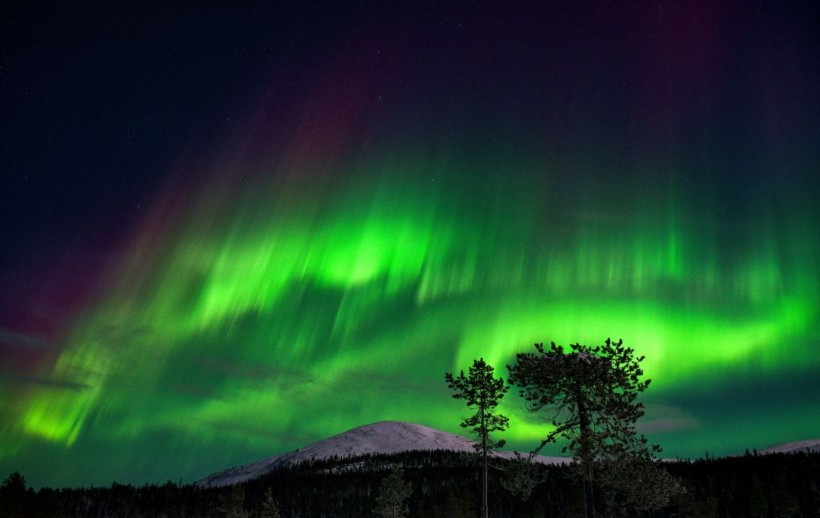A rare solar storm earlier in March caused heightened northern lights activity in Canada in recent days, prompting space and weather agencies to monitor the increased aurora borealis activity. Spotted by the National Aeronautics and Space Administration (NASA), the solar plasma occurred on March 12.
Canada Northern Lights Activity

The solar blast transpired on the other side of the Sun, which faces away from Earth. However, a NASA report on March 14 said the speed in which the solar particles travelled is an unprecedented rate of 2,127 kilometers per second.
Space Weather Canada showed the potential occurrence of active and stormy intervals under the geomagnetic storm in the polar and aural regions of Canada, including parts of northern British Columbia and most parts of northern Quebec, as cited by CTV News.
Also Read: Aurora Borealis 2021: How to Watch the Gorgeous Northern Lights Display in Saskatchewan
Relation to Solar Storms
Our Sun is a hot ball of gas and fire, and it's outer solar atmosphere, the corona, consists of strong magnetic fields and are often above sunspots. The said atmospheric layer can be confined and suddenly release violent bubbles of gas and magnetic fields called coronal mass ejections (CME), according to the NASA.
A giant CME, NASA says, can contain a billion tons of matter that can accelerate with a maximum speed of several million miles per hour, as part of a powerful solar explosion. Solar material passes across the solar system, impacting any planet or spacecraft, along its path. Furthermore, CMEs are sometimes linked with flares but can transpire independently.
Prevailing evidence and previous reports have shown that solar storms like solar flares, in addition to CME, can bring geomagnetic storms, solar radiations, and radio blackouts to Earth. These space weather hazards can disrupt both radio and satellite technology as highly-charged solar particles can hit our planet's magnetosphere, which serves as our protective barrier from radiation in space.
What is an Aurora Borealis?
However, the disruption of this layer of the Earth's atmosphere can also cause an "aurora borealis," also called as "northern lights." It can also occur in the southern hemisphere, as a phenomenon known as "aurora australis."
According to the Royal Museums Greenwich, the said aurora, being the most spectacular displays across the night sky, can be seen near both of Earth's poles, particularly in the northern and southern hemisphere.
For centuries, both the northern lights and the southern lights have either fascinated or frightened humans, according to the museum. Related phenomena in recent years have also reportedly drawn various interpretations of the glowing lights in relation to the extraterrestrial, especially after a solar storm.
Mysterious as they may seem, the bright dancing lights of the aurora are, in fact, collision between electrically-charged particles from the Sun that were able to enter the Earth's atmosphere, according to Canada's Northern Lights Centre.
Colors range from green, red, yellow blue, and to violet. The lights appear in many patterns, including scattered clouds of light and shooting rays.
Related Article: Scientists Recreate Aurora Borealis in Lab to Understand How Northern Lights Are Formed
© 2024 NatureWorldNews.com All rights reserved. Do not reproduce without permission.




![Roundworms with Short Memories 'Stop Forgetting' When Frozen or Given Lithium [Study]](https://1471793142.rsc.cdn77.org/data/thumbs/full/70295/280/157/50/40/roundworms-with-short-memories-stop-forgetting-when-frozen-or-given-lithium-study.jpg)
